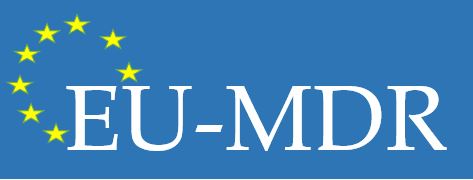EU Medical Device Regulation

An overview about EU MDR
The EU MDR (Medical Device Regulation) Regulation (EU) 2017/745 (EU MDR) is a regulatory approval framework for Medical devices (excluding In-vitro) that adopted as a replacement for the EU’s current Medical Device Directive (93/42/EEC) and the EU’s Directive on active implantable medical devices (90/385/EEC).
Along with the IVDR (In-Vitro Medical Device Regulation), the law was officially published on 05 May 2017, and came into force on 25 May 2017. The Medical devices manufacturers have been given a transition period of 3 years to comply with the standards of newly enacted regulation. Initially, it is informed that all the medical device manufacturers have to be compliant with EU MDR by 26 May 2020. Later on, the same is postponed to 26 May 2021 while that of IVDR is mandatory from May 26, 2022. As of today, the law is fully implemented throughout the European Union and if you are a medical device manufacturer, importer, authorized representative, or supplier/ distributor in the EU then you are bound to know about the latest requirements related to the newly enacted EU Medical Device Regulations.
About EU MDR Compliance
The main aim of enacting EU MDR is to control/ reduce the harmful impacts of certain substances on Medical devices over human health and the environment. The law is more stringent than the previous medical device regulations and is focused more on ensuring a high standard of safety and quality for medical products as well as standardizing data and to ensure the product does not pose any risk to human health and the environment if placed in the EU market.
Mandates to EU Manufacturers, Suppliers, Importers, etc.
Section 10.4 mandates the manufacturers to report the composition of their products and ensure the usage of a list of substances (around 1200) which are identified as category 1A or 1B Carcinogens, Mutagens, Reproductive Toxins (CMRs) listed in the CLP (EC 1907/2006) or endocrine disruptors (EDCs) over the 0.1% limit.
Section 13 limits the usage of materials of biological origin (any human/ animal origin materials or their derivatives used in the product/manufacturing process)
In case, if the product contains any harmful substances more than the threshold limit, the manufacturer has to work to reduce its content to a threshold less than 0.1% in product level. European Commission Scientific Committee on Health, Environmental, and Emerging Risks (SCHEER) guidance on phthalates has issued guidelines that outline the process of using alternative substances or justification for using the notified MDR Chemical Substance. The guidelines will help you to achieve appropriate justification for your Medical device under EU MDR and MDR certification from a notified body. Followed by the approval of notified body, manufacturers can apply for CE marking to place the product in the EU market.
Non-Compliance to EU MDR
If a medical device manufacturer could not able to comply with the requirements of EU MDR, the same may be subjected to hefty penalties, carry out a design change, losing access to suppliers, customers & material market which obviously leads to financial loss and loss of product’s/ company’s reputation with the end customers.
The Manufacturers are required to collect declarations from their suppliers confirming the supplied parts are in compliance with the mandates set by the EU MDR regulation.
How GreenoDix can simplify your requirement?
GreenoDix helps medical device manufacturers in collecting the data from the supplier which are present throughout the supply chain. GreenoDix delivers high quality and streamlined data with complete supplier engagement in a time bound manner.
If you have any queries related to EU MDR, feel free to contact us through the below contact information
Email: [email protected]
Phone: +91 74488 09263
